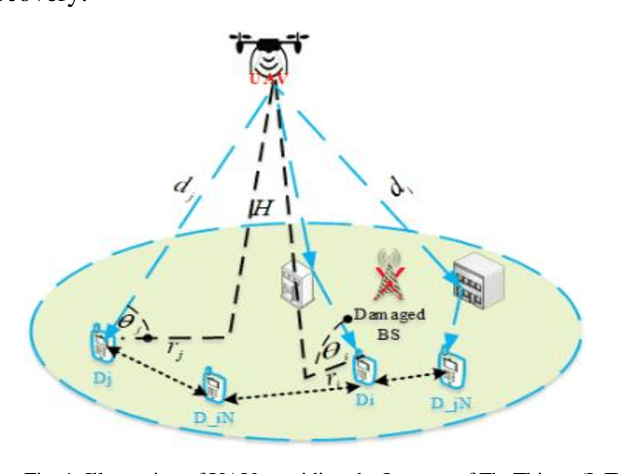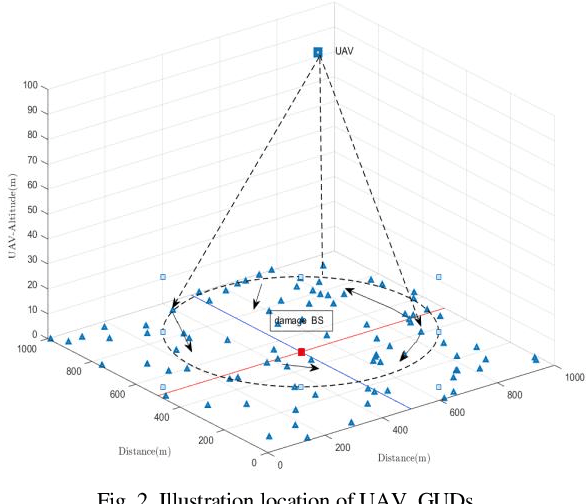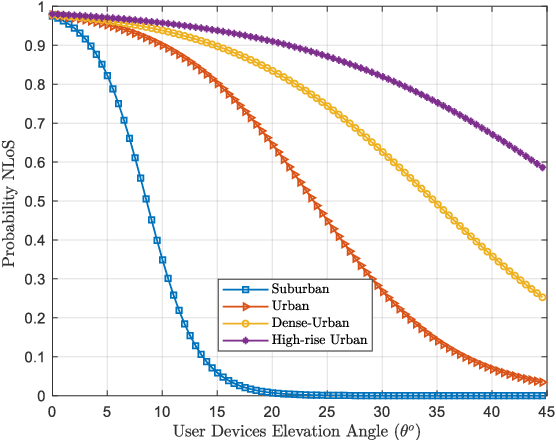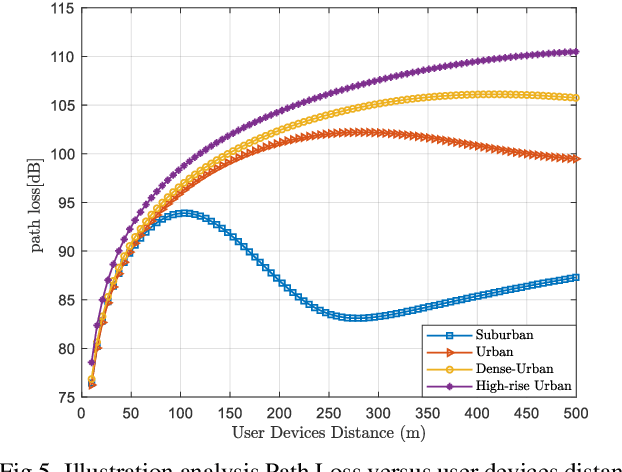Kaharudin Bin Dimyati
Internet of Fly Things For Post-Disaster Recovery Based on Multi-environment
May 08, 2021



Abstract:Natural disasters such as floods and earthquakes immensely impact the telecommunication network infrastructure, leading to the malfunctioning and interruption of wireless services. Consequently, the user devices under the disaster zone are unable to access the cellular base stations. Wireless coverage on an unmanned aerial vehicle (UAV) is considered for providing coverage service to ground user devices in disaster events. This work evaluated the efficient performance of wireless coverage services of UAVs to provide the internet to fly things to help recover the communications link in a natural disaster in multi environments. The results demonstrate the line of sight, nonline of sight, path loss, and coverage probability for the radio propagation environment scenario. Therefore, the path loss and coverage probability are affected by the user devices' elevation angle and distance in the multi-environment system. The user position's optimum user device distance and elevation angle are also investigated to improve the coverage probability, which could be especially useful for the UAV deployment design.
Distributed Clustering for User Devices Under Unmanned Aerial Vehicle Coverage Area during Disaster Recovery
Mar 14, 2021



Abstract:An Unmanned Aerial Vehicle (UAV) is a promising technology for providing wireless coverage to ground user devices. For all the infrastructure communication networks destroyed in disasters, UAVs battery life is challenging during service delivery in a post-disaster scenario. Therefore, selecting cluster heads among user devices plays a vital role in detecting UAV signals and processing data for improving UAV energy efficacy and reliable Connectivity. This paper focuses on the performance evaluation of the clustering approach performance in detecting wireless coverage services with improving energy efficiency. The evaluation performance is a realistic simulation for the ground to air channel Line of Sight (LoS). The results show that the cluster head can effectively link the UAVs and cluster members at minimal energy expenditure. The UAVs altitudes and path loss exponent affected user devices for detecting wireless coverage. Moreover, the bit error rate in the cluster heads is considered for reliable Connectivity in post disaster. Clustering stabilizes the clusters linking the uncovered nodes to the UAV, and its effectiveness in doing so resulted in its ubiquity in emergency communication systems.
 Add to Chrome
Add to Chrome Add to Firefox
Add to Firefox Add to Edge
Add to Edge